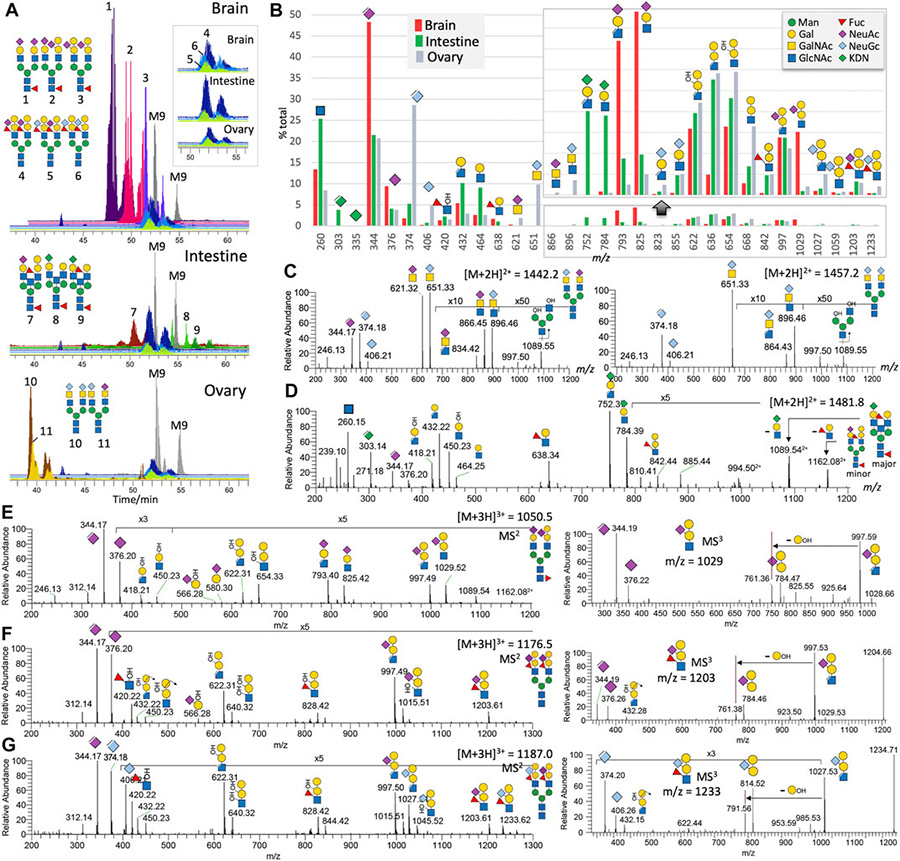
 中央研究院 生物化學研究所
中央研究院 生物化學研究所
Mass spectrometry-based high-sensitivity mapping of terminal glycotopes relies on diagnostic MS2 and/or MS3 ions that can differentiate linkage and define the location of substituents including sulfates. Unambiguous identification of adult zebrafish glycotopes is particularly challenging due to the presence of extra β4-galactosylation on the basic building block of Galβ1-4GlcNAc that can be fucosylated and variably sialylated by N-acetyl, N-glycolyl, or deaminated neuraminic acids. Building on previous groundwork that have identified various organ-specific N- and O-glycans of adult zebrafish, we show here that all the major glycotopes of interest can be readily mapped by direct nano-LC-MS/MS analysis of permethylated glycans. Homing in on the brain-, intestine-, and ovary-derived samples, organ-specific glycomic reference maps based on overlaid extracted ion chromatograms of resolved glycan species, and composite charts of summed intensities of diagnostic MS2 ions representing the distribution and relative abundance of each of the glycotopes and sialic acid variants were established. Moreover, switching to negative mode analysis of sample fractions enriched in negatively charged glycans, we show, for the first time, that a full range of sulfated glycotopes is expressed in adult zebrafish. In particular, 3-O-sulfation of terminal Gal was commonly found, whereas terminal sulfated HexNAc as in GalNAcβ1-4GlcNAc (LacdiNAc), and 3-O-sulfated hexuronic acid as in HNK-1 epitope (SO3-3GlcAβ1-3Galβ1-4GlcNAc) were identified only in the brain and not in the intestine or ovaries analyzed in parallel. Other characteristic structural features of sulfated O- and N-glycans along with their diagnostic ions detected in this discovery mode sulfoglycomic work collectively expand our adult zebrafish glycome atlas, which can now allow for a more complete navigation and probing of the underlying sulfotransferases and glycosyltransferases, in search of the functional relevance of zebrafish-specific glycotopes. Of particular importance is the knowledge of glycomic features distinct from those of humans when using adult zebrafish as an alternative vertebrate model, rather than mouse, for brain-related glyco-neurobiology studies.
